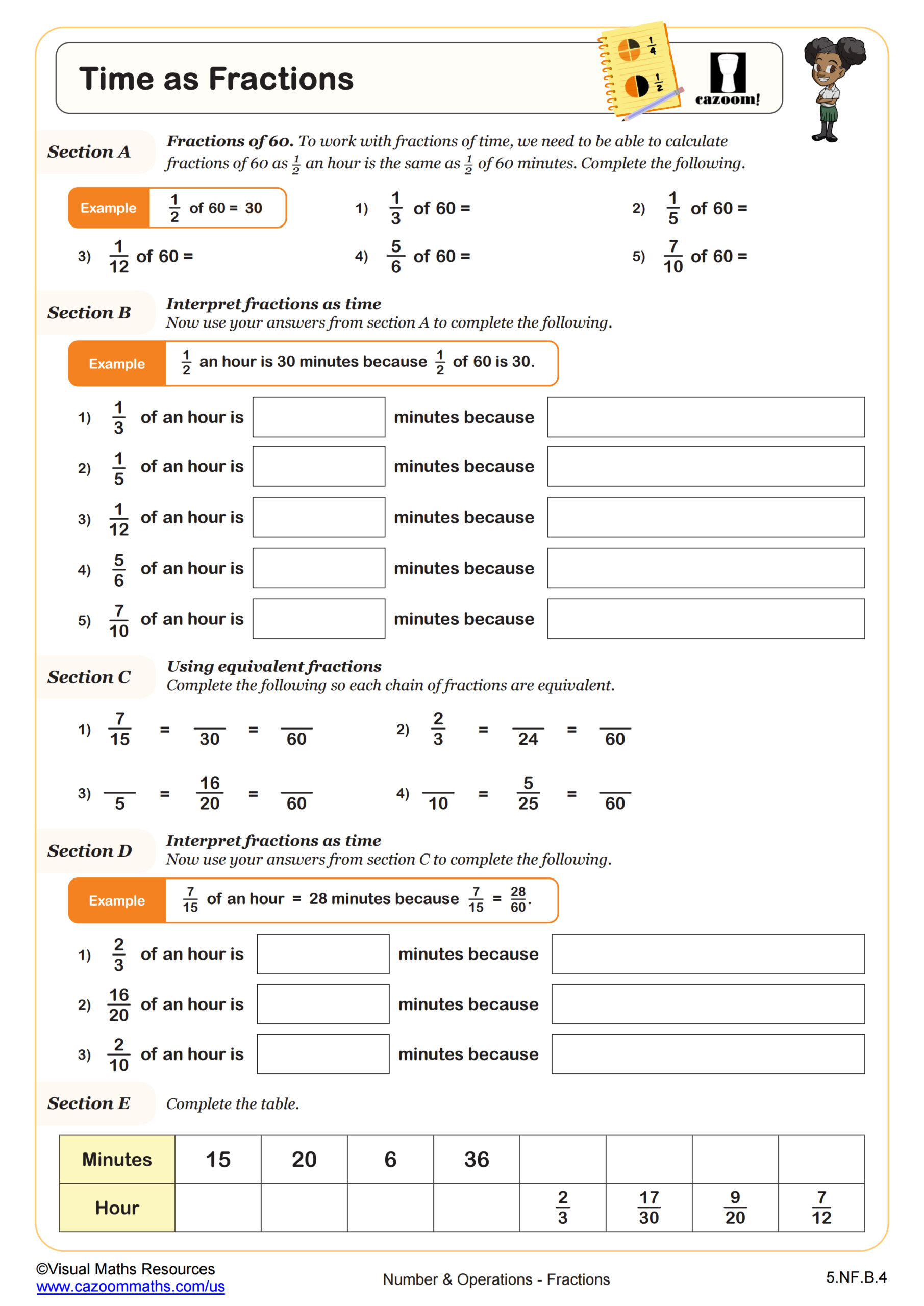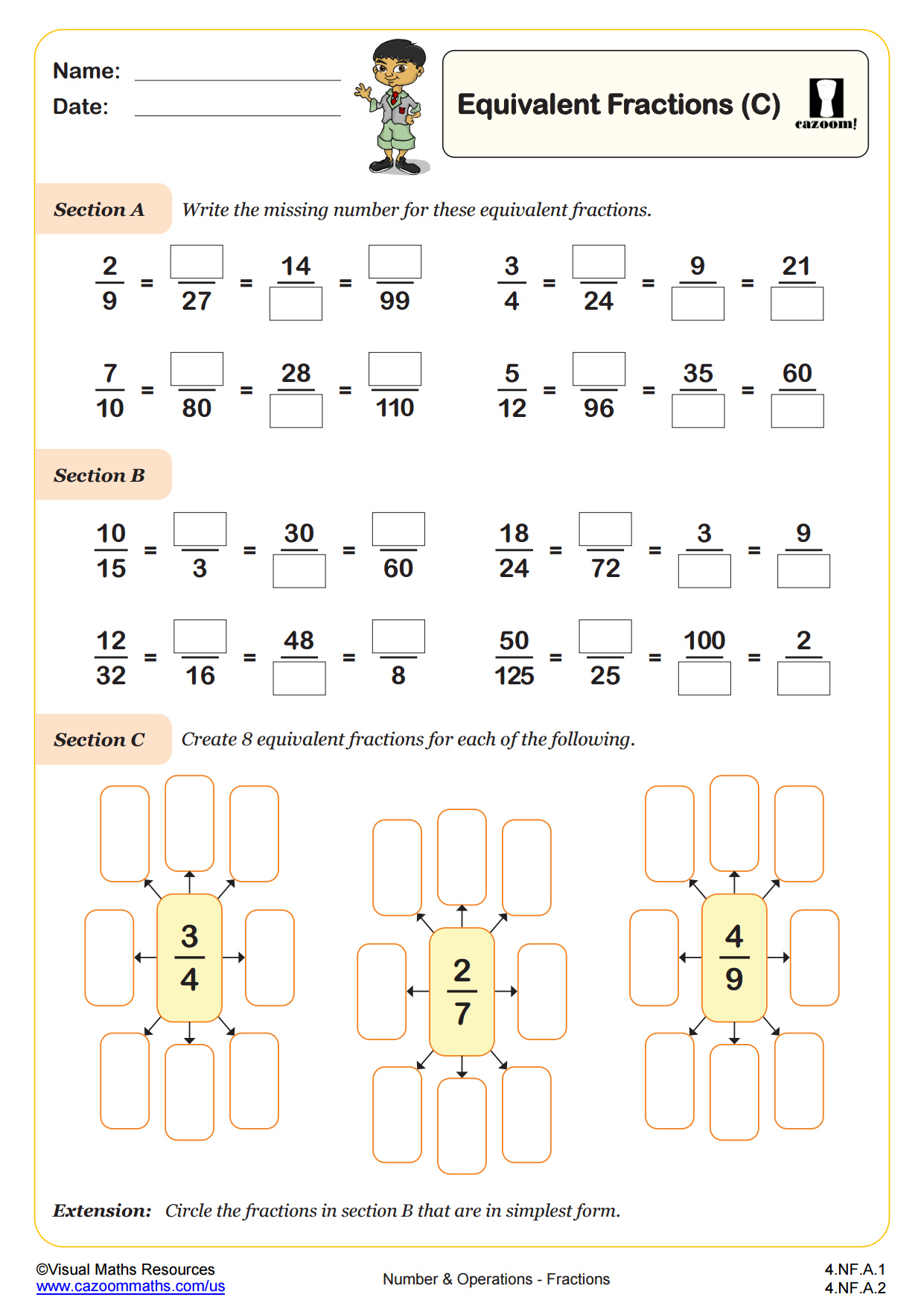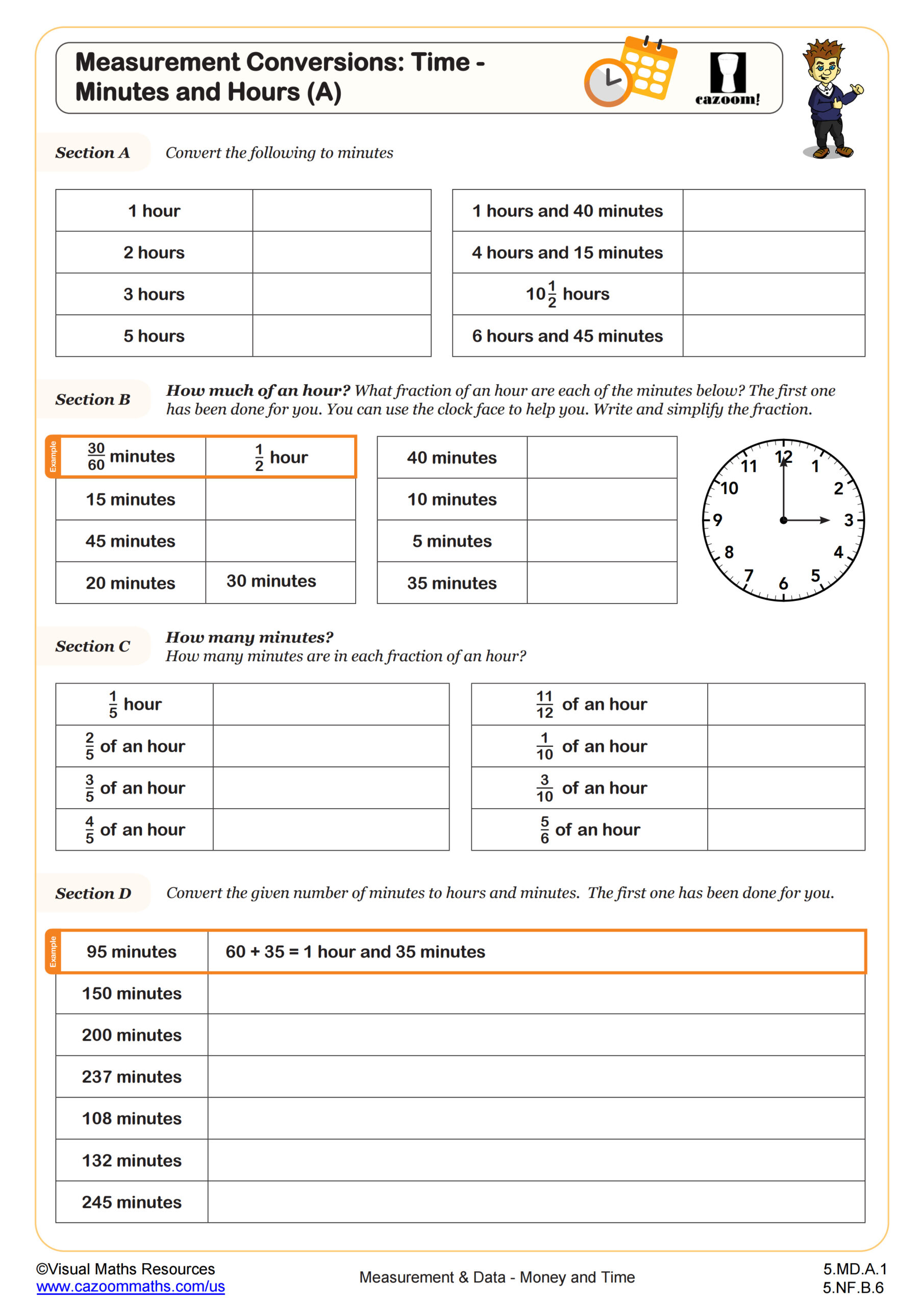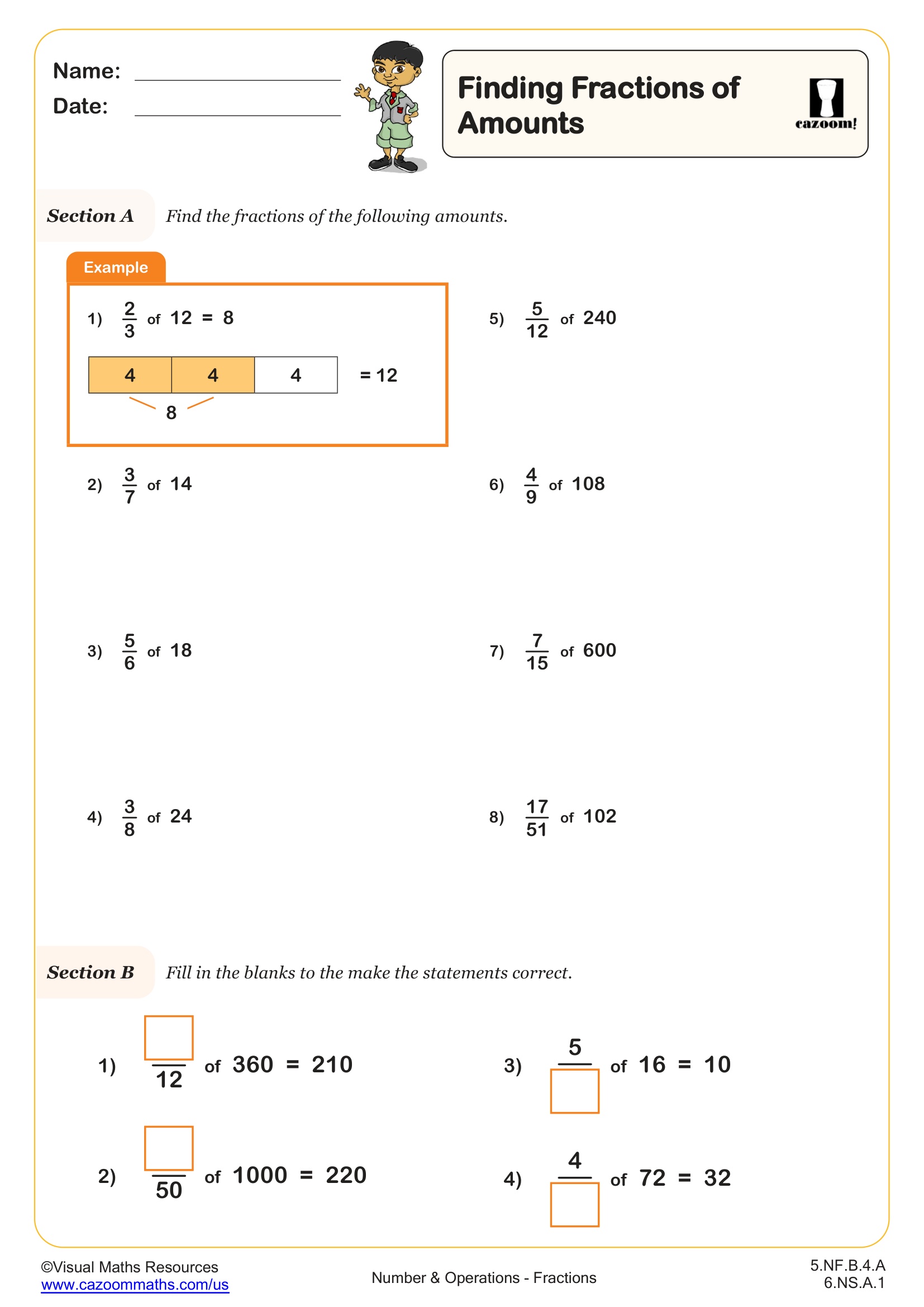Loading...
Time as Fractions (A) WORKSHEET
Time as Fractions (A) WORKSHEET DESCRIPTION
Understanding fractions as lengths of time is often a challenging concept for students to grasp.
Section A is all about finding fractions of 60. Students are given one example and 5 questions which focus on common fractions of time e.g 1/12.
In section B, learners will interpret their answers from section A by completing sentences such as “½ an hour is 30 minutes because ½ of 60 is 30.”
Next, students will form chains of equivalent fractions with one fraction in each set having a denominator of 60, and again, using their answers, will interpret these fractions as units of time.
Finally, learners are faced with 4 amounts in minutes to write as a fraction of an hour and vice versa. Your learners should be able to choose which of the above methods they prefer to use.




